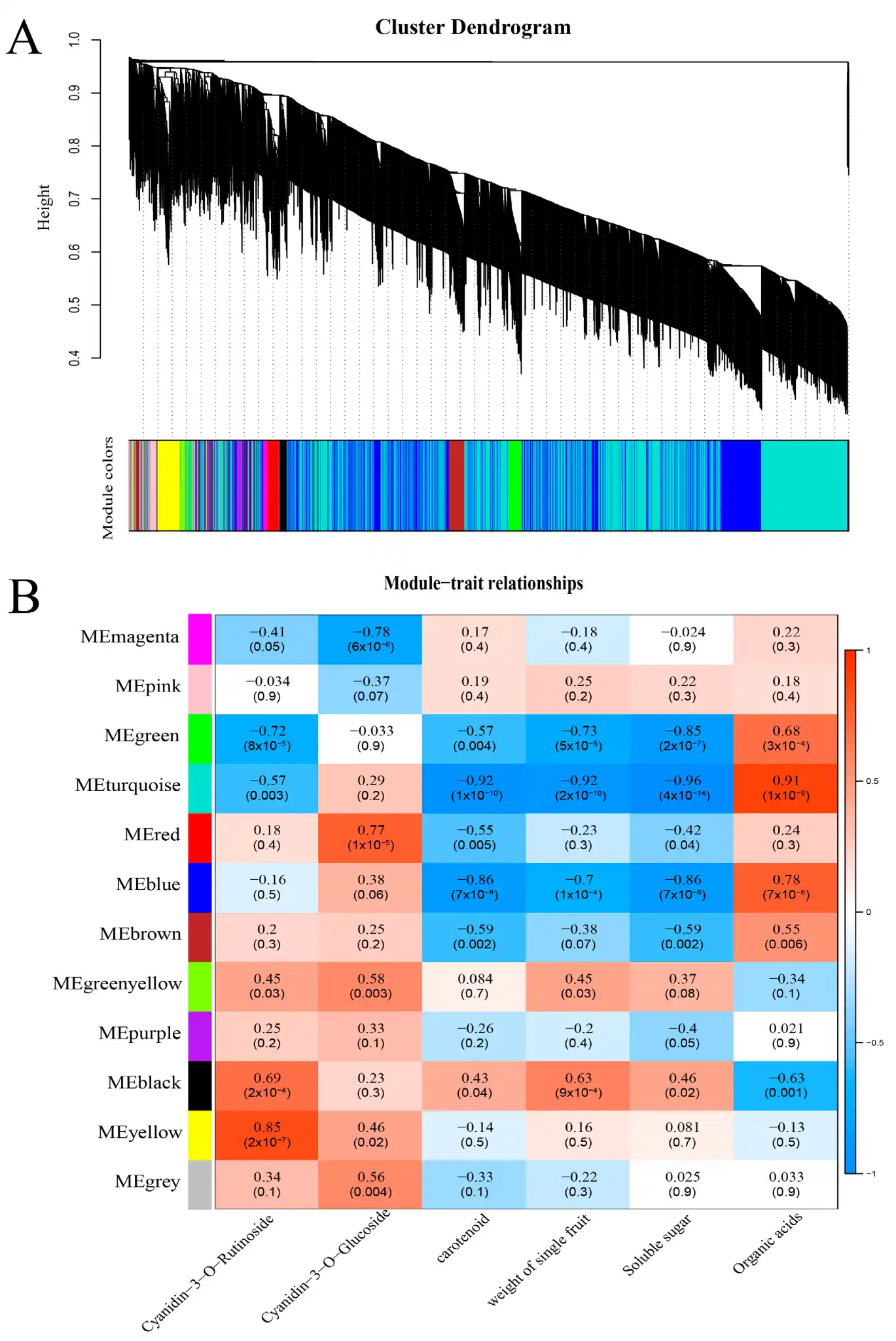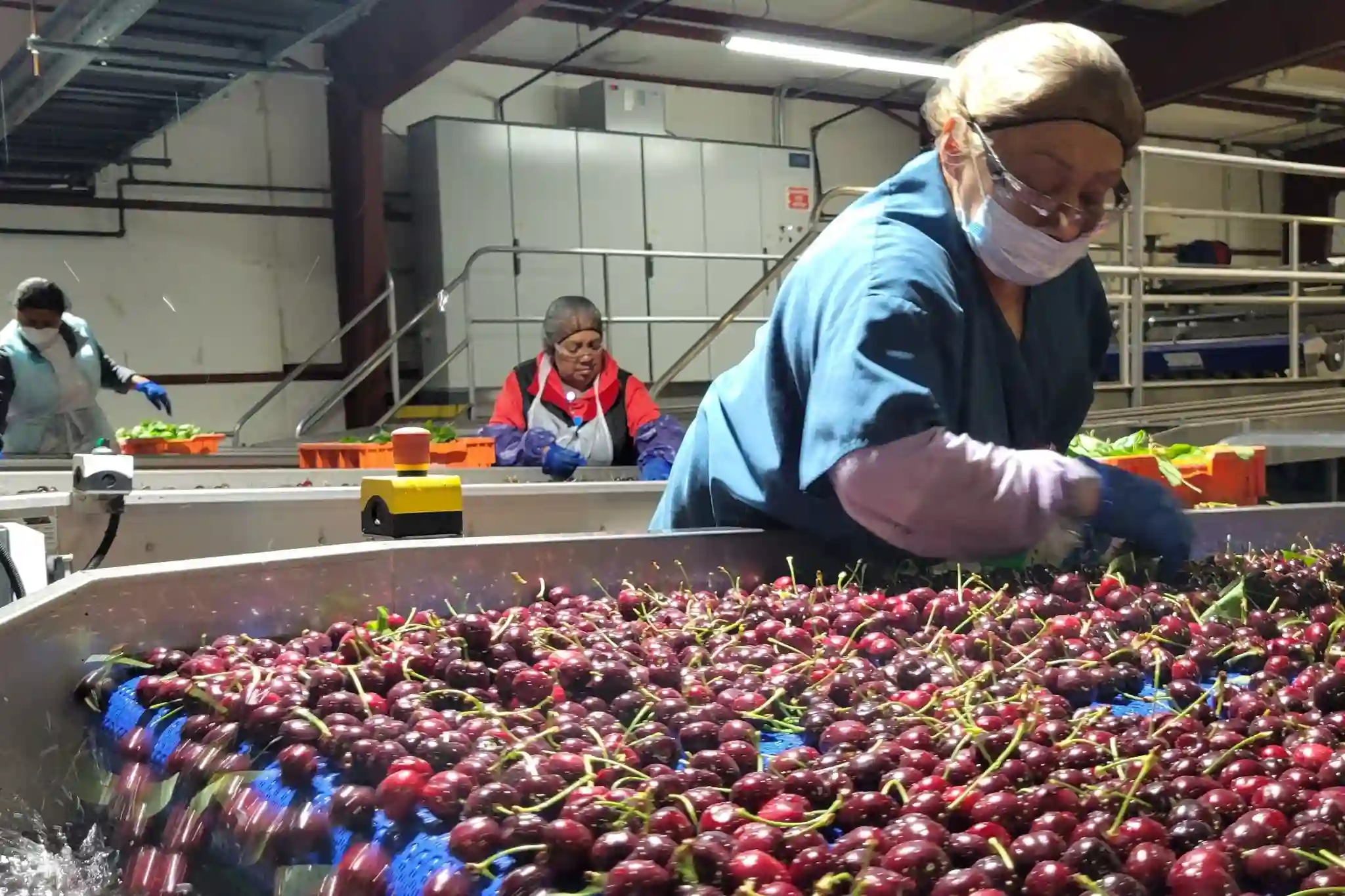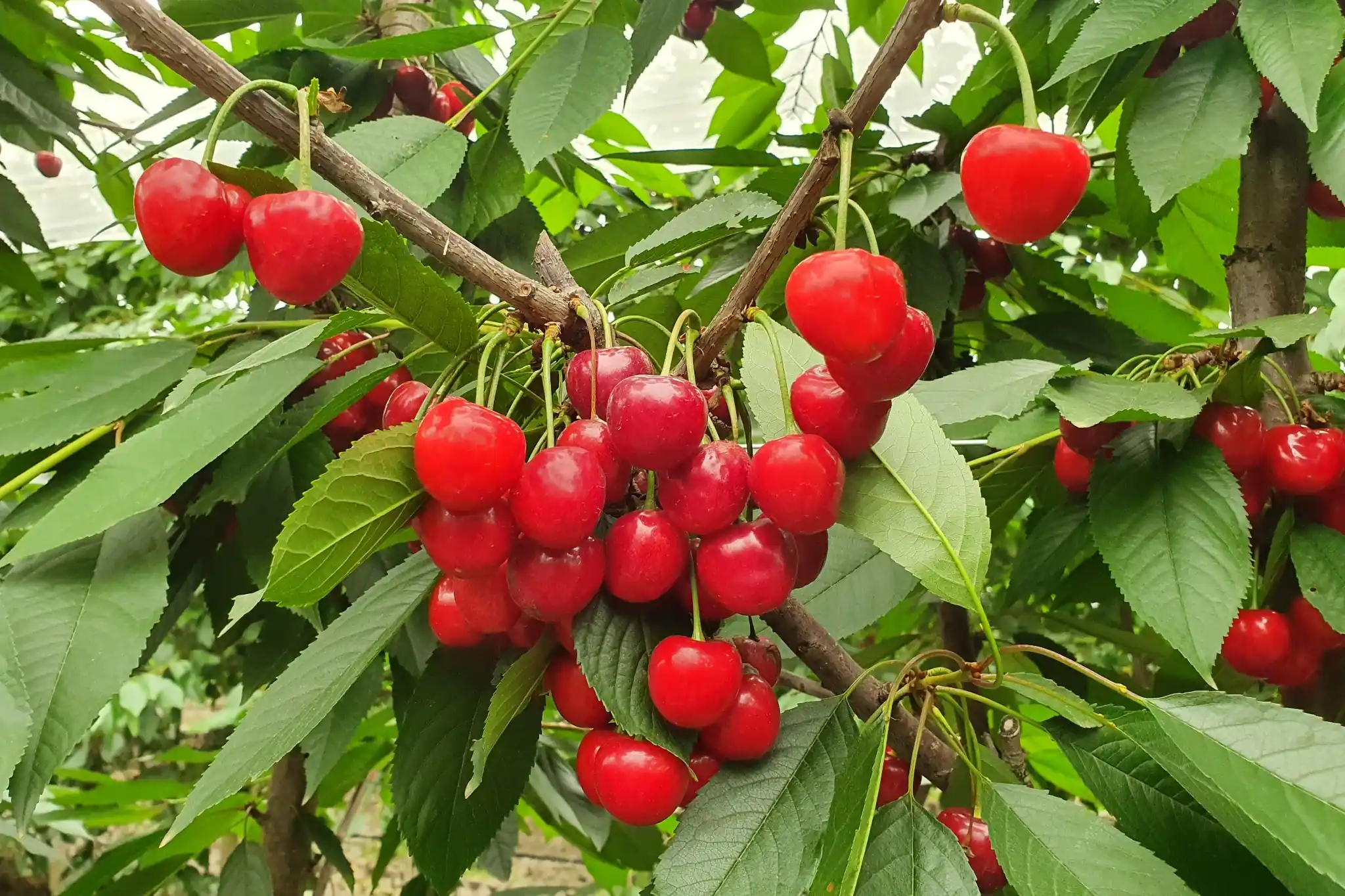Evaluation of fruit quality
Anthocyanins are one of the classes of natural pigments that can be found in plants. These compounds belong to the flavonoid subgroup, and one of their characteristics is that they are soluble in water.
Through the study of a wide range of plant species, including apple, pear, sweet cherry, eggplant, and tomato, insights have been gained into the processes underlying anthocyanin production.
They are clearly an essential element in determining the appearance and color of the sweet cherry fruit. In fact, depending on the type of anthocyanins and the amount present, the color of the fruit can vary from yellow to dark red.
Anthocyanin production and color
In varieties that develop red fruit, it is therefore necessary that during the ripening process, the production of anthocyanins is maintained at high levels; however, the mechanism regulating the transport and accumulation of anthocyanins is not yet fully understood.
The study – currently still published in its preliminary form – by researchers from Zhejiang University and Ningbo Tech University focused particularly on identifying the main anthocyanins present in fruit and analyzing the differential expression of the corresponding genes.
The varieties used for the research were four: three of these with red fruit 'Jiangnanhong' (JNH), '5-106' (5-106), 'Changfengyihao' (CF) and one with yellow fruit 'Chaoyangyihao' (CY).
Study location and protocol
The fruits were harvested in Yuyao, in the city of Ningbo, located in eastern China (121°16′ E, 30°1′ N; altitude 6m). The protocol included four stages of commercial maturity, as follows: forty days after flowering (S1), forty-four days after flowering (S2), forty-eight days after flowering (S3), and fifty-two days after flowering (S4).
 Figure 1. WGCNA analysis of different developmental stages and varieties of sweet cherry. (A) Cluster diagram of co-expression modules. Different colors correspond to different co-expression modules. (B) Relationships between modules and traits. The values in the cells in which the rows and columns cross represent the correlation coefficient between modules and phenotypes, and the numbers in brackets are p values.
Figure 1. WGCNA analysis of different developmental stages and varieties of sweet cherry. (A) Cluster diagram of co-expression modules. Different colors correspond to different co-expression modules. (B) Relationships between modules and traits. The values in the cells in which the rows and columns cross represent the correlation coefficient between modules and phenotypes, and the numbers in brackets are p values.
Moreover, the fruits free from pests, diseases, and mechanical damage, and of similar sizes, were promptly taken to the laboratory. Subsequently, various qualitative parameters were analyzed.
It was observed that the size of the fruits of the red varieties was significantly larger compared to that of the yellow variety.
Main findings and hypotheses
Regarding the different colors of the different varieties, we mentioned that the color of cherries is fundamentally determined by the type and content of anthocyanins. What is interesting to note is that the main anthocyanins found in the red and yellow cultivars were the same, and among these, the main component was cyanidin-3-rutinoside.
From the literature, it seems that the biosynthesis of anthocyanins could lead to a reduction in other processes in plants because it creates direct competition for assimilated carbon.
In this study, the anthocyanin content of the red and yellow sweet cherry varieties increased, while the soluble sugar content of 'CF' slightly decreased.
The researchers therefore hypothesized that during the fruit's maturation, a large amount of organic matter accumulated in the fruit and the synthesis of anthocyanins did not significantly affect the production of soluble sugar.
Vitamin C pathways
Many pathways are involved in the synthesis of vitamin C, the most important of which is the pathway that begins with the synthesis of glucose.
However, the vitamin C content in the red varieties 'JNH', '5-106', and 'CF' gradually increased, but it was not consistent with the change in glucose content.
There might therefore be another pathway for the synthesis of vitamin C and glucose. Last but not least, LOC110744862, LOC110749842, and LOC110753376
Source: preprints202501.0238.v1.pdf
Image source: Xu et al., 2025; SL Fruit Service
Melissa Venturi
University of Bologna (ITA)
Cherry Times - Tutti i diritti riservati













